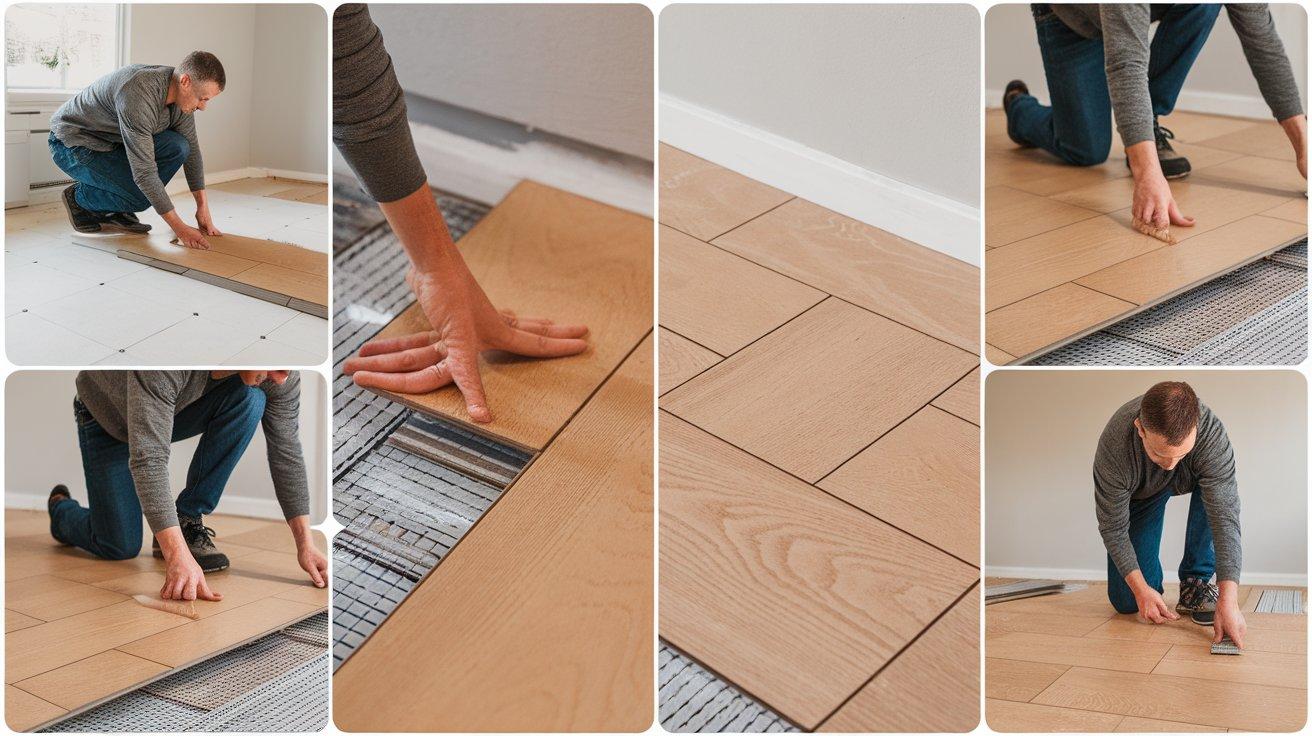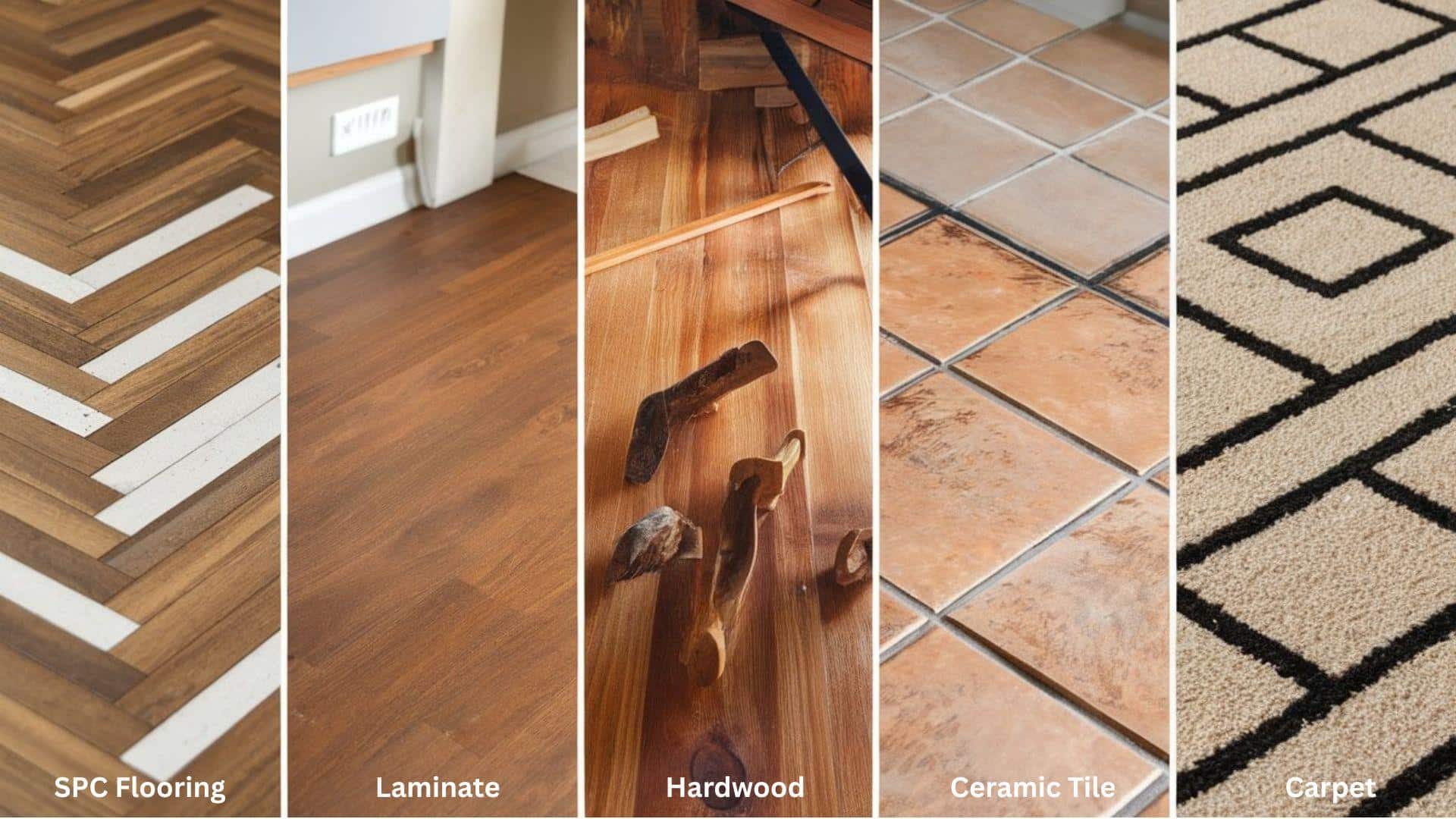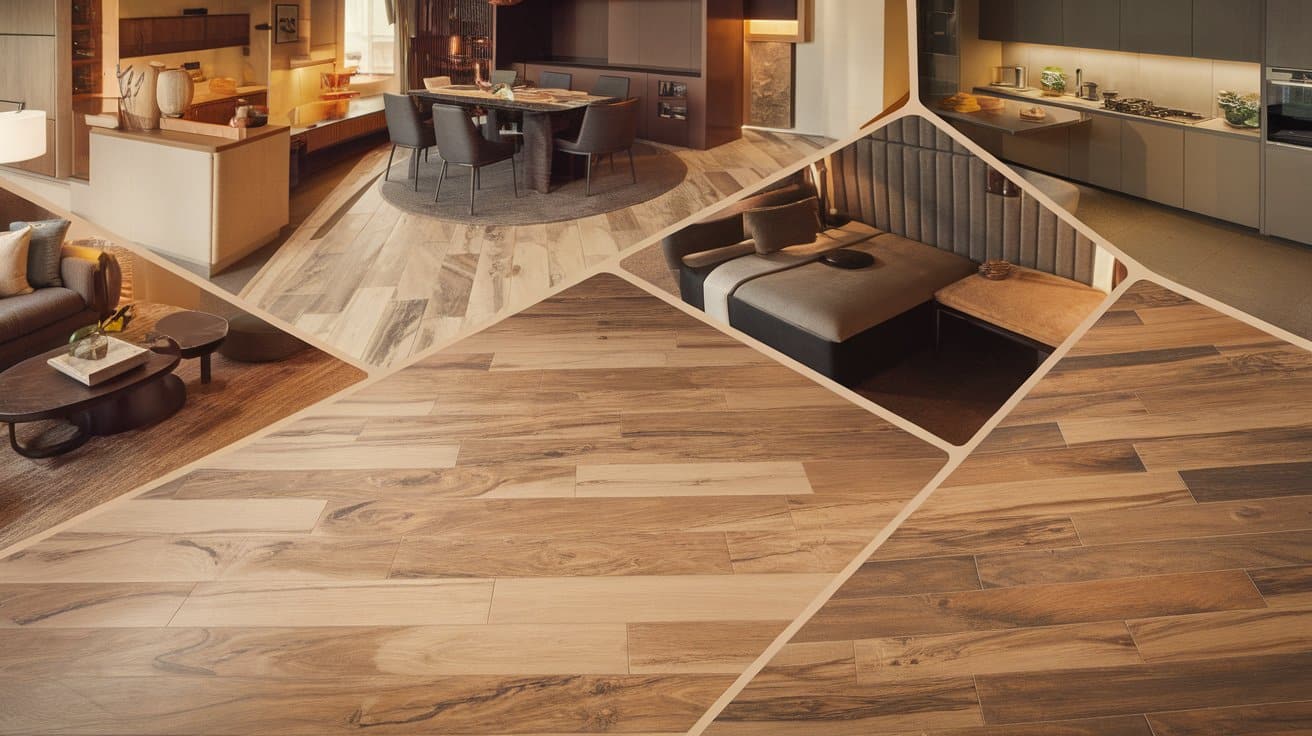Looking for a floor that can handle spills, pets, and heavy foot traffic? Standard home flooring often fails when put to these tests, leaving you with damaged surfaces and costly repairs.
I know how frustrating it can be to find floors that look good and last long. That’s why SPC flooring has become such a popular choice for homeowners who want durability without breaking the bank.
This blog will show you everything about SPC flooring – from what makes it special to how to pick the right one for your home.
By the end of this blog, you’ll have all the facts you need to make a smart decision about whether SPC flooring is the right fit for your space and budget.
What is SPC Flooring?
SPC flooring stands for Stone Plastic Composite flooring. It’s a sturdy type of vinyl floor with a core made from limestone, PVC, and stabilizers.
The stone content gives SPC its rigid nature. Unlike flexible vinyl, it doesn’t bend or warp easily when exposed to temperature changes or moisture.
Most SPC floors are built in layers. The bottom layer acts as a sound buffer. The core layer provides strength. The design layer gives it the look of wood or stone. The top wear layer protects against scratches and stains.
SPC thickness ranges from 3.5mm to 7mm. Thicker options often mean better insulation and noise reduction.
This type of floor sits in the middle price range between laminate and solid hardwood, making it a value option for many homeowners.
Benefits of SPC Flooring
SPC flooring works well in wet areas like kitchens and bathrooms. Its waterproof core won’t swell when exposed to spills or humidity.
The stiff structure allows installation over slightly uneven subfloors without showing bumps.
Key Advantages:
- Water Resistance – Perfect for bathrooms, kitchens, and basements
- Temperature Stable – Won’t expand or contract in heat or cold
- Easy Maintenance – Simple sweeping and occasional mopping
- Comfort – Warmer and softer underfoot than tile
SPC provides high-end looks without the price tag of natural materials, making it perfect for budget-conscious home updates.
How to Choose the Right SPC Flooring?
Picking the right SPC floor involves looking at several key factors:
1. Thickness Matters
The total thickness affects comfort and sound reduction. For busy homes, choose 5-7mm options. The wear layer should be at least 12 mil for high-traffic areas and 20 mil for commercial spaces.
2. Pattern and Color
Consider your room’s lighting. Darker floors show dust more easily but hide stains. Lighter colors make spaces feel bigger, but show dirt faster. Wood-look patterns remain the most popular choice.
3. Quality Indicators
- UV coating strength for fade resistance
- Surface texture for slip resistance
- Edge design (micro-bevel or square)
- Warranty length (longer usually means better quality)
4. Brand Reputation
Research brands online to check customer reviews. Established companies often provide better warranty service and consistent quality.
Always get samples to test in your actual space. Check how they look in different lights and against your furniture before making the final decision.
Essential Tools and Materials Needed
| Tools Needed | Materials Needed |
|---|---|
| Utility knife | SPC flooring planks |
| Tape measure | Underlayment (if not pre-attached) |
| Rubber mallet | Duct tape (for underlayment seams) |
| Tapping block | Transition strips |
| Pull bar | Quarter-round molding |
| Spacers | |
| Level |
How to Install SPC Flooring – Step by Step Process

Installing your SPC floor correctly ensures its long life and good appearance. The click-lock design makes it possible for most homeowners to tackle this job without hiring pros. Here’s how to get professional results on your own.
Step 1: Prepare the Subfloor – Clean thoroughly and ensure the surface is level within 3mm over 3 meters. Remove old flooring, nails, and debris.
Step 2: Acclimate the Planks – Let SPC flooring sit in the room for 24-48 hours to adjust to temperature and humidity.
Step 3: Lay the Underlayment (if required) – Roll out the underlayment across the clean subfloor. Tape the seams to prevent shifting.
Step 4: Start Laying the Planks (Click-Lock System) – Begin in a corner with a 1/4 inch gap around all walls for expansion. Connect planks by angling and clicking them together.
Step 5: Cut Planks to Fit Edges – Measure carefully and use a utility knife with a straight edge to score and snap planks for a perfect fit.
Step 6: Install Molding and Trims – Add baseboards or quarter-round to hide expansion gaps. Install transition strips where SPC meets other flooring.
Step 7: Clean and Inspect the Floor – Sweep the new floor and check for any gaps or loose connections before moving furniture back.
Comparing SPC vs. Other Flooring Types

When choosing floors, it helps to see how SPC compares to other common options:
| Feature | SPC Flooring | Laminate | Hardwood | Ceramic Tile | Carpet |
|---|---|---|---|---|---|
| Water Resistance | Excellent | Poor | Poor | Excellent | Poor |
| Durability | High | Medium | Medium-High | Very High | Low |
| Comfort | Medium | Medium | Medium | Hard | Very Soft |
| DIY Installation | Easy | Easy | Difficult | Difficult | Moderate |
| Cost/sq.ft | $3-$7 | $1-$5 | $6-$12 | $5-$10 | $2-$8 |
| Lifespan (years) | 10-20 | 7-15 | 25+ | 50+ | 5-15 |
| Repair Options | Replace planks | Replace planks | Sand & refinish | Replace tiles | Patch |
SPC stands out with its mix of water resistance, durability, and easy installation. It fills the gap between high-end options like hardwood and budget choices like laminate.
Top SPC Flooring Brands to Consider
When choosing an SPC flooring brand, consider factors such as warranty length, available styles, price range, and customer reviews to ensure quality and long-term satisfaction. Here’s a quick overview of the top contenders in the market:
1. Shaw Floors
Shaw offers excellent pattern variety with their Floorté Pro line. Their planks feature realistic wood grains and come with strong warranties. Price range: $4-$7 per square foot.
2. Mohawk Industries
Mohawk SolidTech provides water-resistant cores and antimicrobial protection. Known for durability in high-traffic homes. Their styles include stone and wood looks. Price range: $3.50-$6 per square foot.
3. COREtec
A pioneer in the SPC market, COREtec offers wide planks with detailed textures. Their Plus line includes cork backing for added comfort and sound reduction. Price range: $4-$8 per square foot.
4. Armstrong Flooring
Armstrong Rigid Core provides good value with straightforward quality levels. Their Vivero line offers excellent scratch resistance for homes with pets. Price range: $3-$5.50 per square foot.
5. Karndean Designflooring
Karndean offers premium SPC flooring through their Korlok Select line, featuring highly realistic wood and stone visuals with exceptional detail. Their planks include pre-attached acoustic backing and a secure 5G click-locking system for easier installation. Price range: $5-$9 per square foot with a generous 30-year residential warranty.
Maintenance Tips and Installation Mistakes to Avoid
- Sweep or vacuum regularly to remove dirt and grit
- Wipe up spills promptly, even though the floor is waterproof
- Use entrance mats to trap dirt from shoes
- Place felt pads under furniture legs to prevent scratches
- Damp mop with warm water and a mild cleaner weekly
- Use a pH-neutral floor cleaner made for vinyl floors
- Avoid harsh chemicals like bleach or ammonia
- Skip steam mops, which can damage the wear layer
Common Installation Mistakes to Avoid
- Skipping acclimation time – Let planks adjust to room temperature for 24-48 hours.
- Ignoring expansion gaps – Without them, your floor will buckle when it expands.
- Poor subfloor prep – Small bumps become big problems under rigid SPC
- Not staggering joints – Creates weak points and looks unprofessional
- Using the wrong underlayment – Check manufacturer specs for compatible options
- Forcing planks together – Causes edge damage; use proper tapping tools
- Cutting corners on transitions – Proper moldings between rooms prevent edge damage
Conclusion
SPC flooring stands out in the flooring market for good reasons. It combines the best of many worlds – the water resistance of tile, the look of hardwood, and easier installation than most options.
When you weigh cost against durability, SPC strikes a smart balance. The waterproof core gives peace of mind in kitchens and bathrooms, while the tough wear layer handles daily life with kids and pets.
No floor is perfect for every home, but SPC works well in most spaces. Its mix of practical benefits and good looks has made it a top choice for modern homes.
Take time to select quality brands, follow installation steps carefully, and maintain your floors with simple cleaning. Your SPC floor will reward you with years of reliable service.
Frequently Asked Questions
Can I Install SPC Flooring Over Existing Tile or Hardwood?
Yes, you can install SPC over most existing floors if they’re flat and stable. Just ensure the surface is clean and level before installation.
Will SPC Flooring Fade from Sunlight Exposure?
SPC can fade with prolonged direct sunlight. Use window treatments in rooms with large south-facing windows to protect your floor’s color longevity.
Is SPC Flooring Environmentally Friendly?
While not as eco-friendly as natural materials, many SPC brands now offer low-VOC options, and some use recycled content in their manufacturing process.


